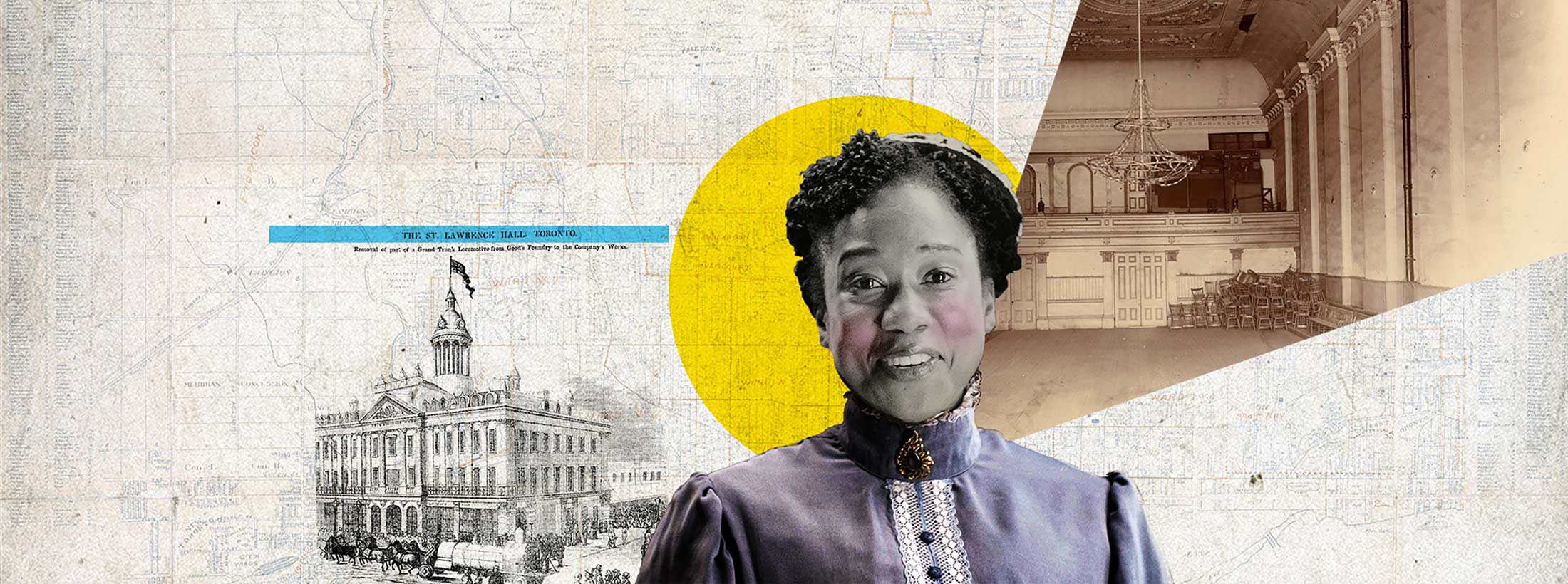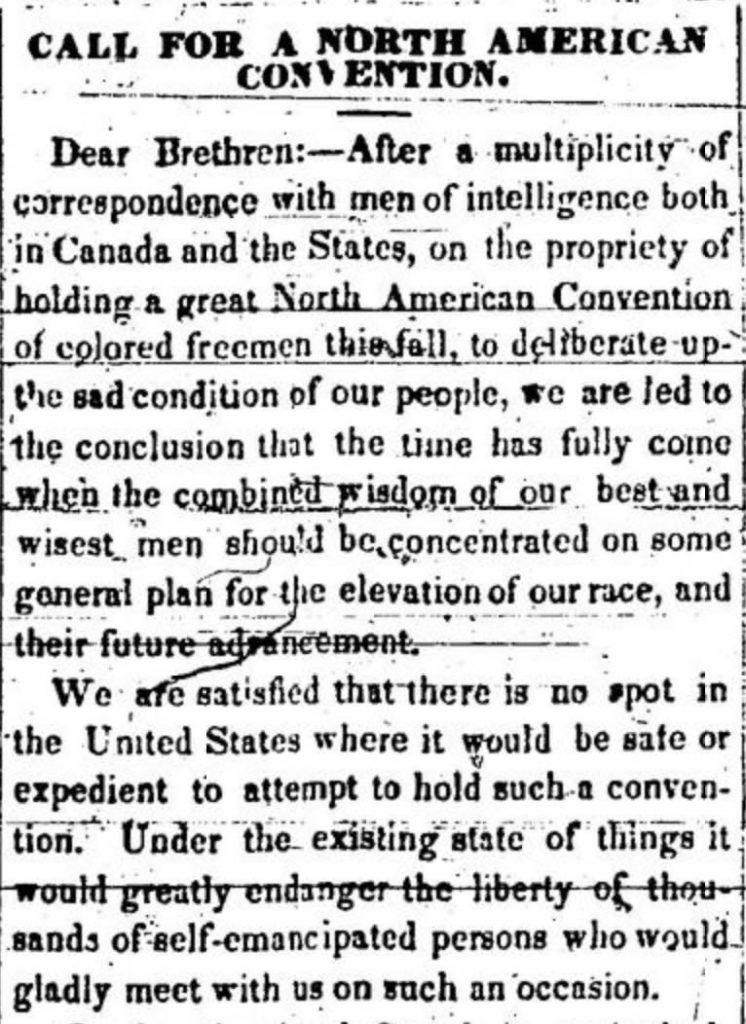

The 1851 Convention
“A great North American Convention of colored people is appointed to meet in this city on the 11th, 12th, and 13th inst. Numerous and efficient delegates are expected to be present from the West and also from the Northern States. One important subject of deliberation will be the question of colonization which has been touched on in our columns lately in several letters.”
– Globe and Mail, Sept. 6 1851
In 1851, Toronto was a hub for abolitionist activities and anti-slavery gatherings. Leading figures in the abolitionist movement included Henry Bibb, Mary Bibb, Frederick Douglass, and Mary Ann Shadd Cary, who all participated in anti-slavery activities in Toronto. The North American Convention of Colored Freemen was a major example of these gatherings, a three day convention at St. Lawrence Hall in Toronto from September 11-13, 1851.
The 1851 convention was responding to The Fugitive Slave Act, a law passed in the United States a year prior. The Fugitive Slave Act allowed the pursuit and retrieval of slaves, including in Northern States where slavery was abolished. This law increased the risk of Black people being kidnapped and sold into slavery. The law resulted in a wave of migration of self-emancipated slaves and free Black people to Canada in the 1850s.
At the North American Convention of Colored Freemen, fifty-three delegates and hundreds of people gathered to discuss abolitionism, the Fugitive Slave Act, and how to assist Black people fleeing into Canada West (present day Ontario). Topics of discussion included emancipating the Black race from slavery, land ownership, segregation, and settlement in Canada. Toronto was chosen as the location for the convention for its safety and proximity to the United States for travelling delegates.
The Convention resulted in the following resolutions:
- Condemned the Fugitive Slave Act as a law that should not be endured by any people.
- Identified Canada West as the most desirable place for Black people in the American continent.
- Recommended Black people to settle in Canada West and obtain land for themselves and their families to work freely in agriculture.
However, not all delegates wholeheartedly supported the above resolutions, the Convention was also a space for debate. For example, some American abolitionists believed they should stay in the United States to protest the Fugitive Slave Act rather than flee to Canada.
Above all, the Convention allowed leading activists and thinkers to connect with one another to imagine a better future for Black people.
Learn More
Want to dive deeper? Read the full proceedings of the North American Convention of Colored Freemen published in the Voice of the Fugitive newspaper in 1851

